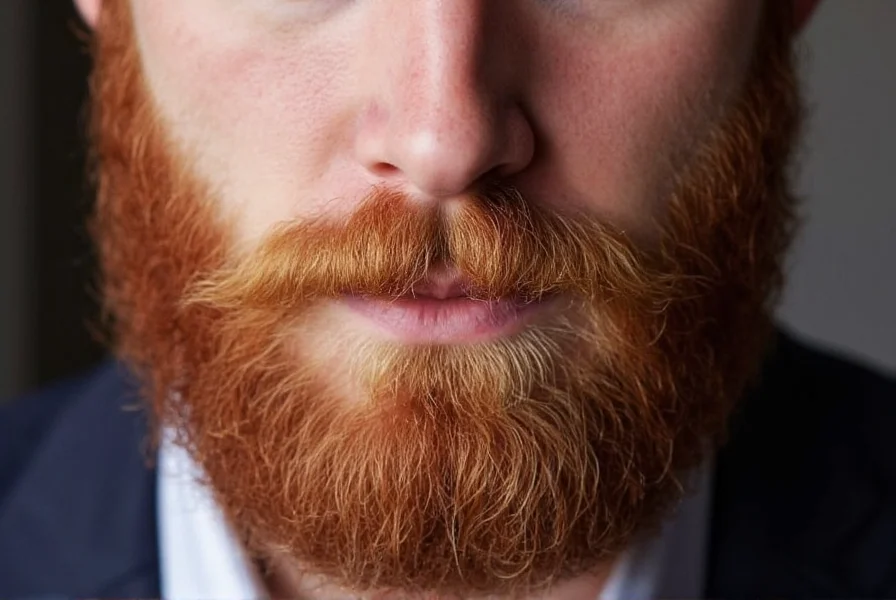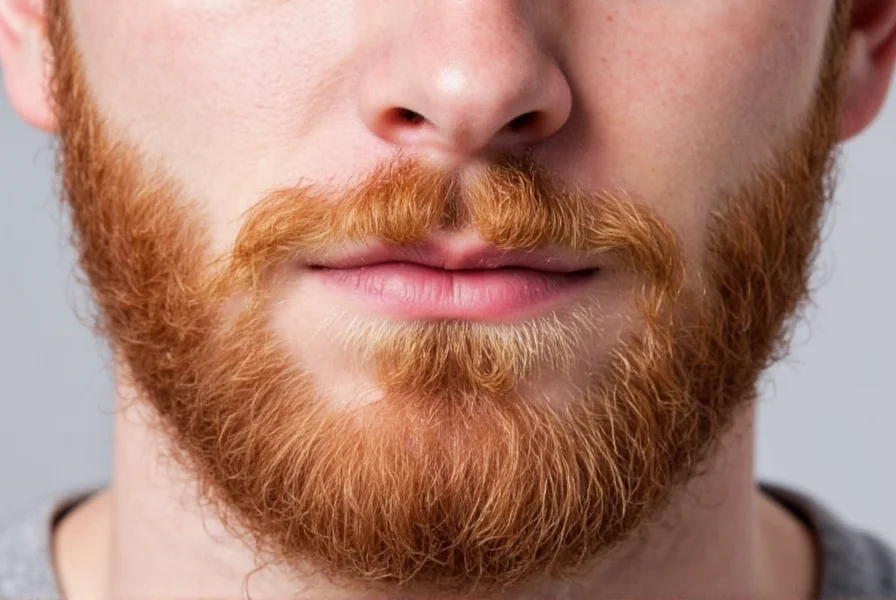Understanding Ginger Beards: Genetics and Characteristics
Ginger beards result from specific genetic variations in the MC1R gene that produce pheomelanin rather than eumelanin, creating that distinctive red hue. Unlike darker beards, ginger facial hair often has different properties that require specialized care approaches.
People with ginger beards typically have fair complexions that are more susceptible to sun damage and irritation. The hair itself tends to be finer but can be wiry, and many ginger-bearded individuals experience patchier growth patterns during the early stages of beard development.
Unique Challenges of Ginger Beard Maintenance
Ginger beards present specific challenges that differ from darker facial hair:
| Challenge | Why It Occurs | Solution Approach |
|---|---|---|
| Patchy growth | Slower growth cycle in red hair follicles | Patience during growth phase, strategic trimming |
| Skin sensitivity | Less melanin in underlying skin | Gentle products, sun protection, moisturizing |
| Color fading | Pheomelanin breaks down faster than eumelanin | Avoid harsh chemicals, use color-safe products |
| Texture variation | Mixed hair thickness common in ginger beards | Regular conditioning, appropriate styling products |
Essential Ginger Beard Care Routine
Developing an effective ginger beard maintenance regimen requires addressing both the hair and the sensitive skin beneath. Here's a professional approach:
Cleansing Protocol
Use sulfate-free beard washes 2-3 times weekly. Ginger beards often thrive with gentler cleansing than daily washing, which can strip natural oils from already delicate hair. Look for products with natural ingredients like aloe vera and chamomile that won't irritate fair skin.
Moisturizing Strategy
Red beard hair tends to be drier than darker varieties. Apply beard oil daily, focusing on the skin underneath. Jojoba and argan oils work particularly well for ginger beards as they mimic natural sebum and won't alter the distinctive red tones. Follow with a light beard balm for styling and additional moisture retention.
Sun Protection Measures
Many don't realize that ginger beards offer minimal UV protection to the skin beneath. Incorporate beard products with SPF or use facial sunscreens specifically formulated for bearded areas. Reapply every two hours during extended sun exposure, especially during summer months when red hair can fade to an unwanted orange tone.
Styling Ginger Beards for Maximum Impact
The right style can transform a ginger beard from ordinary to extraordinary. Consider these professional recommendations:
Face Shape Considerations
Ginger beards often look most flattering when they complement natural facial structure:
- Round faces: Opt for longer, squared-off styles that create angular definition
- Square jaws: Medium-length styles that soften strong jawlines work best
- Oval faces: Most ginger beard styles will complement this versatile shape
- Long faces: Wider, fuller styles help balance facial proportions
Color Enhancement Techniques
Preserve and enhance your natural ginger tones with these methods:
- Avoid harsh chemical treatments that strip color
- Use color-safe shampoos formulated for red hair
- Apply beard oils with natural red-enhancing properties
- Consider henna-based treatments for richer tones (patch test first)
Addressing Common Ginger Beard Concerns
Many ginger-bearded individuals face specific issues that require targeted solutions:
Managing Premature Graying
Redheads often experience earlier graying than those with darker hair. When gray hairs appear in your ginger beard:
- Embrace the salt-and-pepper look as a distinguished feature
- Use subtle tinting products specifically for red tones
- Maintain consistent grooming to blend different shades
- Avoid harsh dyes that can create unnatural contrasts
Dealing with Skin Redness
The fair skin common with ginger beards often shows redness, especially after shaving or in cold weather. Combat this with:
- Aloe-based after-shave treatments
- Daily moisturizers with green tea extract
- Cold compress applications for acute redness
- Consultation with a dermatologist for persistent issues

Seasonal Ginger Beard Adjustments
Your care routine should evolve with the seasons to maintain optimal ginger beard health:
- Summer: Increase sun protection, use lighter oils, wash more frequently due to sweat
- Fall: Transition to slightly heavier moisturizers as air becomes drier
- Winter: Use richer balms, protect from wind exposure, increase conditioning frequency
- Spring: Gradually lighten products, address any winter damage with restorative treatments
Frequently Asked Questions About Ginger Beards
Why does my ginger beard feel coarser than my head hair?
Ginger beard hair often has a different texture than head hair due to hormonal influences on facial hair follicles. The coarseness comes from the unique structure of red hair follicles, which produce hair with a thicker cuticle layer. Regular conditioning with natural oils can help soften the texture over time.
Do ginger beards require different products than darker beards?
Yes, ginger beards benefit from specialized products. The fair skin typically accompanying red facial hair is more sensitive, requiring gentler formulations. Additionally, red hair contains pheomelanin which breaks down differently than the eumelanin in darker hair, making color-safe products essential to maintain natural tones without unwanted fading.
How can I prevent my ginger beard from turning orange in the sun?
To prevent orange tones in your ginger beard, use UV-protective beard products with SPF, wear hats during peak sun hours, and avoid chlorine exposure. Apply beard oils with natural red-preserving properties like pomegranate or raspberry seed oil. If fading occurs, consult a professional barber about subtle color-enhancing treatments specifically formulated for red tones.
Are ginger beards more prone to patchiness during growth?
Yes, ginger beards often experience more noticeable patchiness during the growth phase. This occurs because red hair follicles have a longer growth cycle and may activate at different times. The patchiness usually resolves with patience—allow at least 8-12 weeks of growth before assessing full coverage. Strategic trimming can help minimize the appearance of patchy areas during the growth process.











 浙公网安备
33010002000092号
浙公网安备
33010002000092号 浙B2-20120091-4
浙B2-20120091-4